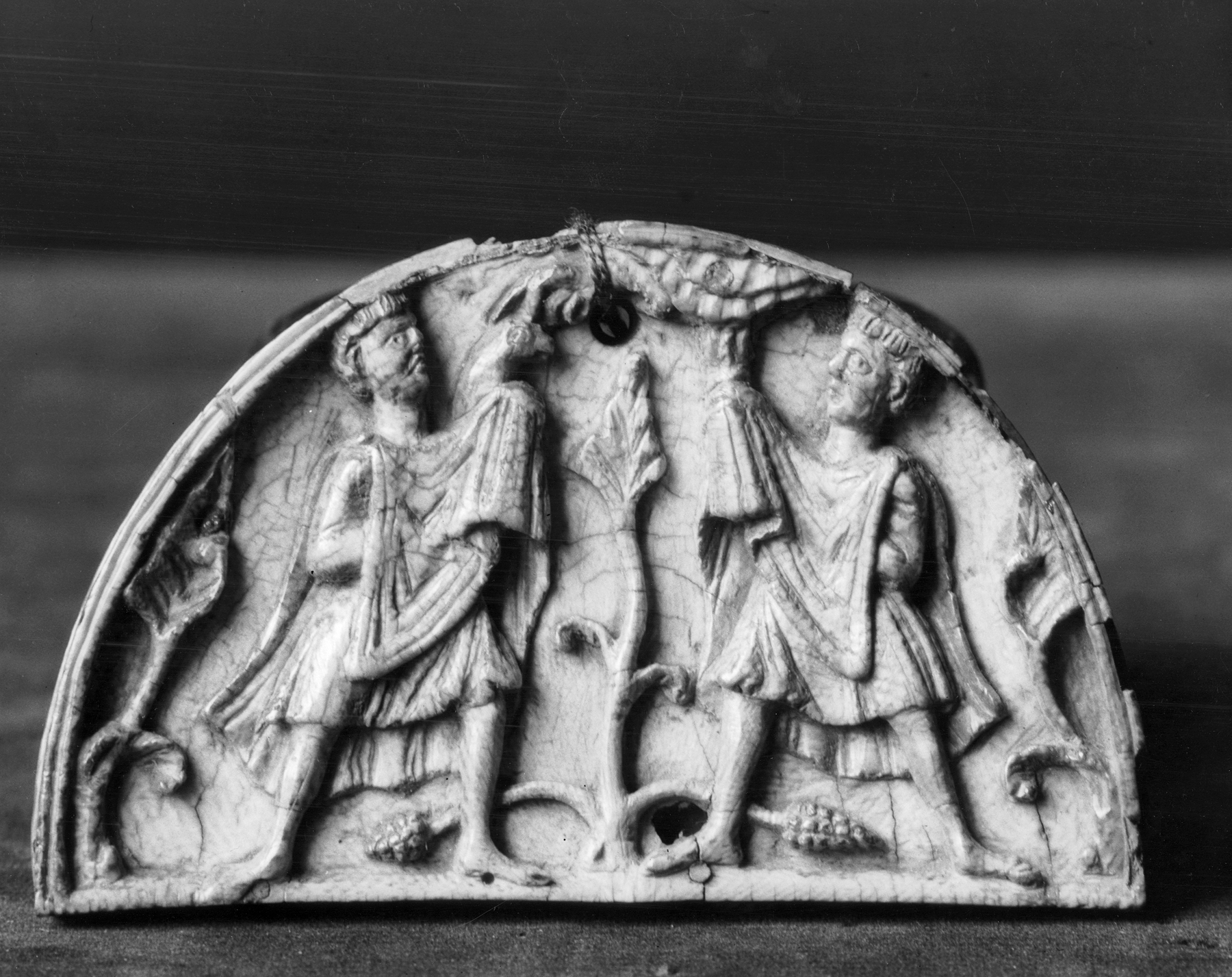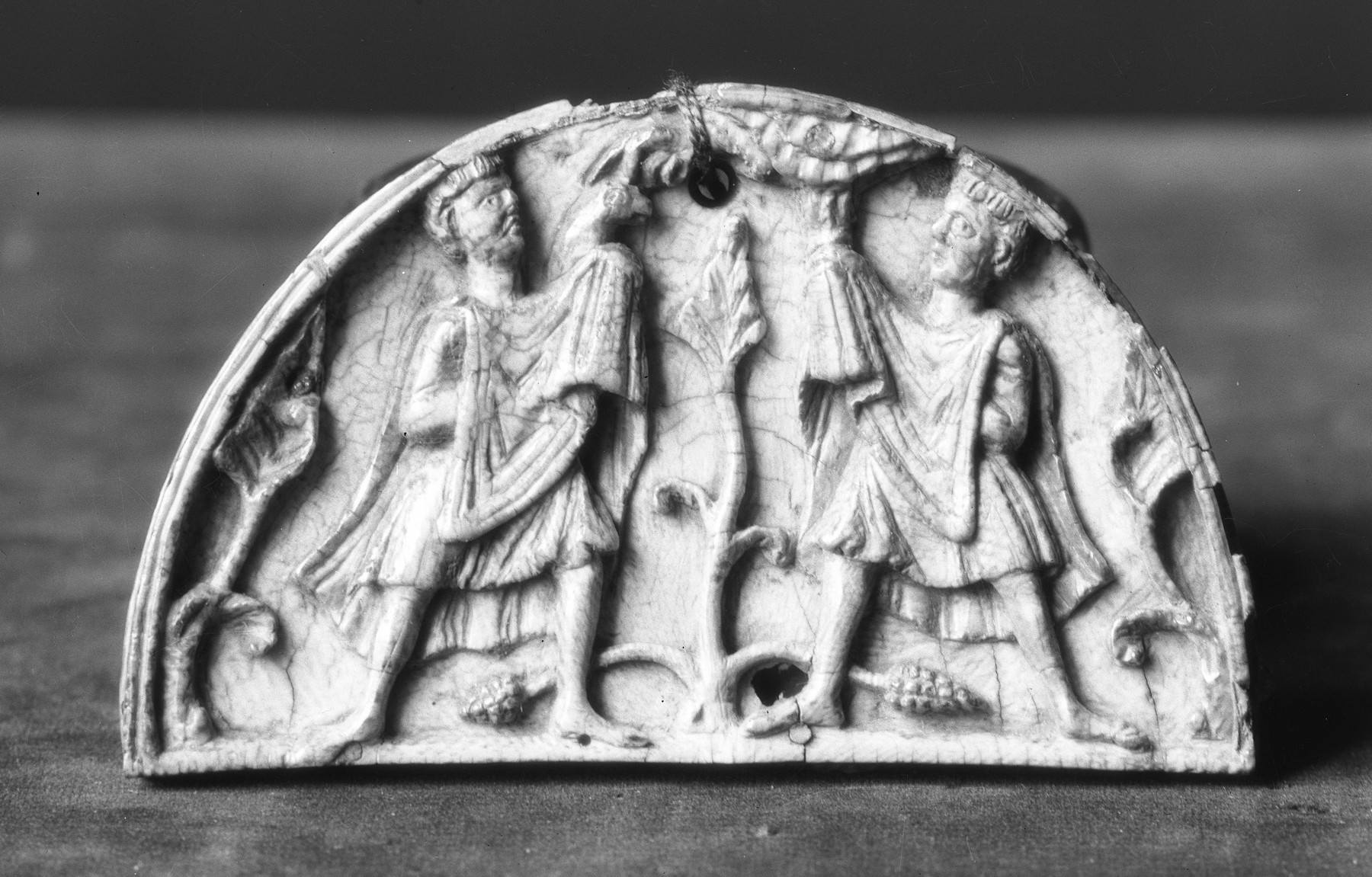The Sacrifice of Cain and Abel
(Medieval Europe )
This semi-circular ivory plaque is carved with the biblical narrative of Genesis 4:2-4, describing the offerings to God made by the sons of Adam and Eve. Above, the Hand of God emerges from a cloud to bless Abel, who stands at the left holding a lamb, while at the right, Cain and his offering of a sheaf of wheat are not blessed. Scenes of the Sacrifice of Cain and Abel were often used on portable altars to symbolize the offering of the Eucharist (the bread and the wine representing Christ's body and blood) during the Mass. The style of the figures and drapery is similar to manuscript illuminations from Jumièges in northern France and St. Alban's in England.
Provenance
Provenance (from the French provenir, 'to come from/forth') is the chronology of the ownership, custody, or location of a historical object. Learn more about provenance at the Walters.
Count Auguste de Bastard [date and mode of acquisition unknown]; Henri Daguerre, Paris [date and mode of acquisition unknown]; Henry Walters, Baltimore, 1926, by purchase; Walters Art Museum, 1931, by bequest.
Exhibitions
| 1940 | Arts of the Middle Ages. Museum of Fine Arts, Boston, Boston. |
Conservation
| Date | Description | Narrative |
|---|---|---|
| 1/11/1962 | Treatment | cleaned |
| 10/24/2011 | Examination | other |
Geographies
United Kingdom, England
(Place of Origin)
France (Place of Origin)
Measurements
2 1/2 x 4 1/8 x 9/16 in. (6.3 x 10.5 x 1.5 cm)
Credit Line
Acquired by Henry Walters, 1926
Location in Museum
Centre Street: Third Floor: Migration and Early Medieval Art
Accession Number
In libraries, galleries, museums, and archives, an accession number is a unique identifier assigned to each object in the collection.
In libraries, galleries, museums, and archives, an accession number is a unique identifier assigned to each object in the collection.
71.289












